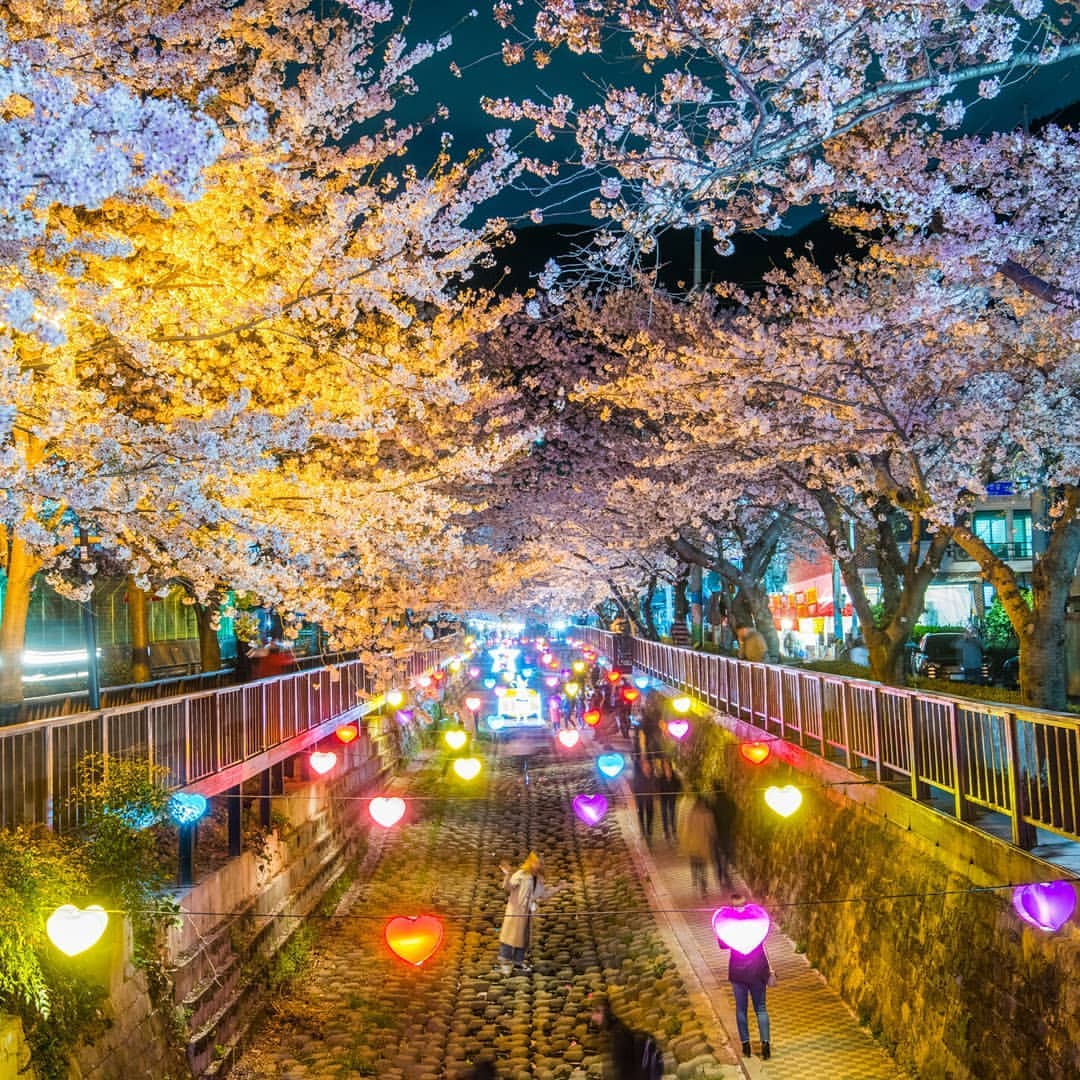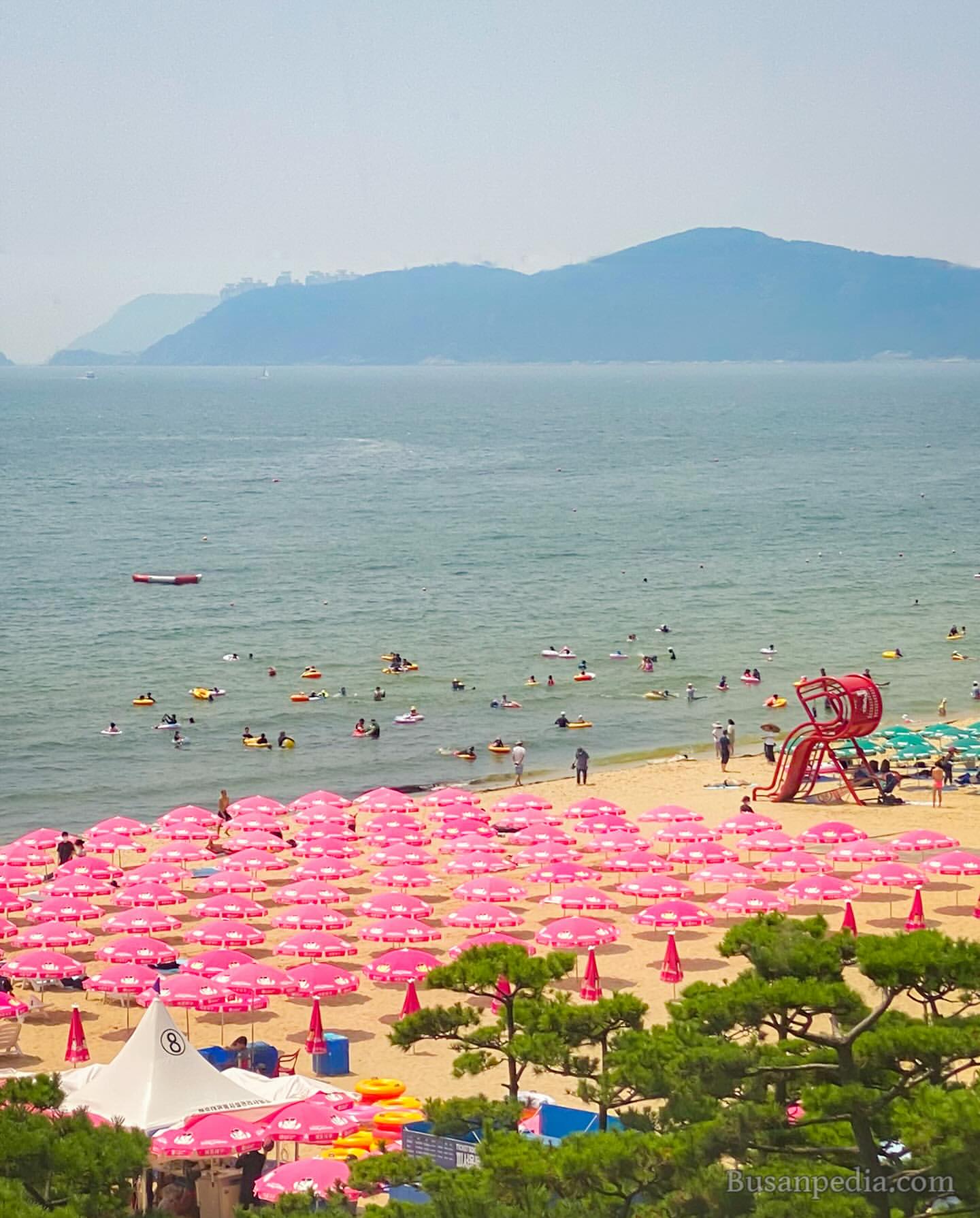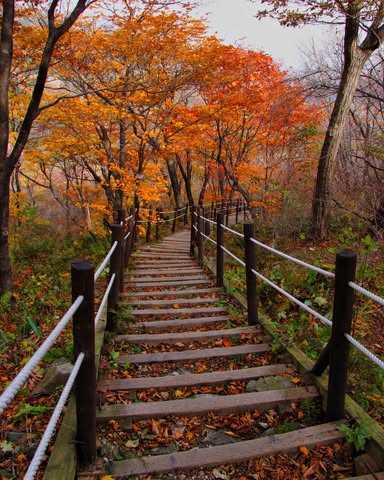Experience only the best things when on vacation. It is easier said than done. But what’s the use of going if you are unaware of the best time to visit South Korea?
Make a plan with a bit of research, and you can enjoy the best of all seasons. You can picnic under a canopy of pink cherry blossoms. If you are a hiking person, then hiking through mountains in the autumn air can be perfect.
Not just that, there is a lot to say about the seasons here. South Korea doesn’t just change with the seasons. It undergoes a complete transformation with four dramatically different experiences throughout the year.
This blog doesn’t just describe the season. I made sure to give details on the things to do and places to visit in South Korea during each season.
As I mentioned, the blog contains a lot of information, so I’ll provide a brief answer before delving into the expanded version.
What is the Best Time to Visit South Korea?
April to early June (spring) and September to early November (autumn) are South Korea’s best months to visit, with temperatures of 15-25°C.
However, this does not mean other months are bad. Your trip to South Korea depends on several factors, including your preferred activities, festival experiences, budget, and other considerations. Let’s see them in detail.
Monthly Highlights for the Best Time to Visit South Korea
Understanding all the seasons in South Korea is good. However, knowing what each month offers can help you choose the exact time to visit the country.
There is always one perfect season to visit any place. However, every month is the best time to visit South Korea, and the choice varies depending on individual interests. You will know why when you read the table below.
| Month | Temperature (°C) | Festival & Tourist Highlights |
| January | 4 to -5 | Daegwallyeong Snow Festival, lowest hotel prices, ice fishing at Hwacheon, and empty tourist sites |
| February | 5 to -4 | Seollal (Lunar New Year) and winter sports |
| March | 5 to 11 | Early cherry blossoms in Jeju, Jeju Fire Festival, and Seoul Fashion Week |
| April | 15 to 20 | Jinhae Cherry Blossom Festival and peak tourist season (book 3 months ahead) |
| May | 15 to 24 | Lotus Lantern Festival, Boseong Green Tea Festival, best hiking weather, fewer crowds than April |
| June | 19 to 26 | Beach season opens, theme parks, monsoon starts late in the month, and average pricing |
| July | 22 to 28 | Boryeong Mud Festival, monsoon peak, and best for Jeju Island visits |
| August | 23 to 29 | Liberation Day (Aug 15), beach peak season, summer festivals, dolphin spotting in Jeju |
| September | 19 to 26 | Chuseok harvest festival, early autumn colours, and the weather stabilises |
| October | 15 to 22 | Peak foliage in Seoraksan is the second-best season, with excellent photography time |
| November | 5 to 15 | Late foliage in the south, shoulder season pricing, hot springs are popular |
| December | 7 to -3 | Christmas markets, ski season opens, and a winter wonderland in Seoul |
South Korea’s Seasons with Top Things to Do
Korea experiences four seasons, each with unique weather and cultural celebrations, revealing a different side of the country.
Going to South Korea, after understanding these seasonal shifts, helps you plan the perfect trip based on what matters most to you.
Spring (April – June): Pleasant Cherry Blossom Magic
When travelling to South Korea during Spring, you will witness the most famous cherry blossoms, which transform the country into a pink wonderland.
Temperatures during these months range from 15°C to 26°C, giving you comfortable conditions for outdoor activities.
April is the peak season with higher prices and crowds. In May, you have similar beauty with fewer tourists. In June, the weather remains stable, with mostly sunny days.
Spring is the most lively season, as it brings renewal to the country after winter. Families normally plan outdoor activities, as they all spend the winter indoors.

Overall, this season is not just a deal for tourists but also for locals. This means the flight and accommodation prices will go up. So, plan ahead.
Top Spring Experiences
- Jinhae Gunhangje Cherry Blossom Festival (Over 350,000 cherry trees create stunning pink tunnels in early April)
- Go to traditional markets like Namdaemun and Gwangjang to buy South Korean things
- Take a hike in Seoraksan National Park
- Visit Gyeongbokgung Palace to see traditional architecture
- Must tour the Boseong Green Tea Plantations (tea festival in May)
- Explore Nami Island and try ziplining and cycling
- Go to Bukchon Hanok Village to experience the authentic Korean culture (main landmark in Seoul, offering a lot of things to do nearby.
Summer (July – August): Beach Time
Summer temperatures range from 25 to 29°C. The humidity levels are high, making it the hottest.
In July and August, you also have monsoon rains. Despite the confusing weather, the coastal areas have plenty of attractions. All the beaches in South Korea are literally filled with locals and tourists.

The Koreans usually love the summer because it gives them a chance to run off to the beaches, islands, and mountains for relief from the city heat and the hustle work life.
Top Summer Experiences
- Join the Boryeong Mud Festival (during Mid-July, you can see mud wrestling and concerts with international crowds)
- Relax on the famous Haeundae Beach in Busan
- Island hop around Jeju
- Chill in the Damyang Bamboo Forest
- Surfing in Yangyang, kayaking in the Gangwon-do coast, or visiting water parks like Caribbean Bay for family-friendly activities
- Experience the Seoul nightlife (sleep through the day to avoid the heat and party at night)
Autumn(September – November): Aesthetically Golden Locations
Autumn is as popular as Spring. This is the most beautiful time of the year to visit South Korea.
From September to November, these months bring stable weather, low humidity, and spectacular fall vegetation that transforms mountains and parks into a painting.
The lanes that are filled with trees give you a shade of red, orange, and yellow, making every street a photo spot.
Personally, October is an ideal month for visiting Korea. You will have an average temperature of 19°C. And, unlike cherry blossoms that last only 10 days, autumn colours stay for 6-8 weeks.

The most important thing to keep in mind is Chuseok, Korea’s most important holiday, similar to Thanksgiving, which falls during autumn. If you are visiting at this time of year, you have a greater chance of experiencing the cultural family activities, especially if you choose to stay in an Airbnb.
Top Autumn Experiences
- This is kimjang season. Visit local cultural centres to see locals prepare kimchi or join workshops to learn the world-famous Kimchi
- Celebrate Chuseok traditions with traditional games like yutnori, tasting songpyeon rice cakes, and witness cultural ceremonies
- Explore Korea’s largest Jirisan National Park, offering hiking through diverse ecosystems
- Wander Bukchon Hanok Village
- Visit Namsan Tower to see the clear autumn skies
- Attend regional festivals like the Andong Mask Dance Festival
Winter (December – March): Great for Budget Travellers
One of the best seasons to enjoy is if you can bear the cold. The temperature ranges from -3°C to 11°C.
Despite all the brutal weather conditions, you have the best chance to travel to South Korea on a low budget.
I know it can be challenging for Indians to travel during winter, as we come from a warmer part of the world. However, if you visit, you can experience things that are unavailable in other seasons, like Christmas lights, world-class skiing, and traditional bathhouse culture.
Top Winter Experiences
- Ski at PyeongChang or Yongpyeong resorts
- Experience jjimjilbang culture (bathhouses)
- Attend the Hwacheon Ice Fishing Festival in January
- Must explore Christmas markets, as all stores play great music and hang beautiful lights
- Witness the Lunar New Year in local villages. They host special events and can see families wear hanbok for ceremonies
- Visit palaces like Gyeongbokgung, Changdeokgung, and Deoksugung. They are covered in snow, and give you postcard pictures
Budget-Friendly Time Visit South Korea
South Korea is an expensive destination for Indian Travellers. But this country is on everyone’s bucket list. That’s why you need to find all the ways to make this trip on a budget.
- Cheapest Months: If you are on a budget, then the perfect time to visit South Korea is January or February. You can see that flight costs are reduced by 40%. Not just that, the stay and sightseeing costs also drop.
- Shoulder Season: Early June and late November give you an average price on all things. Additionally, you don’t experience extreme weather here. This season is less expensive than peak season but slightly higher than winter. However, this is the best time to visit South Korea, considering the climate and cost.
Essential Information to Know Before Visiting South Korea
Let’s be realistic, more than the main question, which is “when is the best time to visit South Korea: the tips I am going to provide are equally important.
Do You Need a Visa for South Korea?
An Indian passport holder should apply for a tourist visa. And for a South Korea tourist visa, an Indian must have
- Valid passport (6+ months validity)
- Recent photos
- Proof of financial means
- Flight/hotel bookings
- Travel itinerary
- Cover letter with reasons for that trip
What to Pack for Your South Korea Trip?
Packing for South Korea depends on the season you travel. The country’s weather changes between spring, summer, autumn, and winter. Here is a simple guide that can help you pack.
- Spring/Autumn: Light layers, comfortable shoes, an umbrella, a light raincoat, allergy medication, and a mask, as this time of year, there is dust in the air.
- Summer: Cotton or linen clothes, and trousers are best. Then, sunscreen, flip-flops, and swimwear are a must.
- Winter: Thermal underclothes, heavy winter coat, warm boots, gloves, scarf, and hand warmers
- Must-have in all seasons: Korean electrical adapter (Type C/F, 220V) and comfortable shoes
Conclusion
You have no idea how much of an impact a season carries, especially when travelling abroad. If you don’t pick a season that suits you, you will have to face all the consequences. It can be high travel costs, getting sick, summer dehydration in certain countries, or having to live through unbearable winters.
Therefore, decide on your ideal time to visit South Korea and make the necessary arrangements accordingly.
You don’t have to pressure yourself to figure all of this out. You can just contact us to clear all your doubts about international travel. At Dimaak Tours, we assist you with flights, hotels, sightseeing, and more when you are travelling.
Frequently Asked Questions on the Best Time to Visit South Korea
What is the best month to visit South Korea?
October gives you perfect weather conditions, with comfortable temperatures of 15-22°C. You can also experience peak autumn foliage and stable weather.
However, May provides similar benefits with lower costs and fewer tourists after the cherry blossom season ends.
How many days should you spend in South Korea?
A minimum of 7 days is the best option to explore Seoul, plus an extra region, such as Busan or Jeju.
However, for a complete experience, 10-14 days is ideal. It covers Seoul, Busan, Jeju Island, and Gyeongju. Then your trip can include Seoraksan National Park and smaller villages.
When is cherry blossom season in South Korea?
Late March to mid-April, moving south to north. Jeju Island blooms first (March 25-April 5), followed by Busan (March 28-April 7), Seoul (April 5-15), and northern regions (April 10-20). The exact timing varies from year to year based on the winter temperature
When is the best time to visit Seoul?
April is an ideal time to visit Seoul, as it coincides with the blooming of the cherry blossoms. You can also choose October, autumn foliage. Both of these months offer comfortable temperatures, ranging from 15-20°C.
When is cherry blossom season in South Korea?
Late March to mid-April, and it moves from south to north. At first, Jeju Island blooms, followed by Busan, Seoul, and northern regions. The exact timing varies from year to year based on winter temperatures.